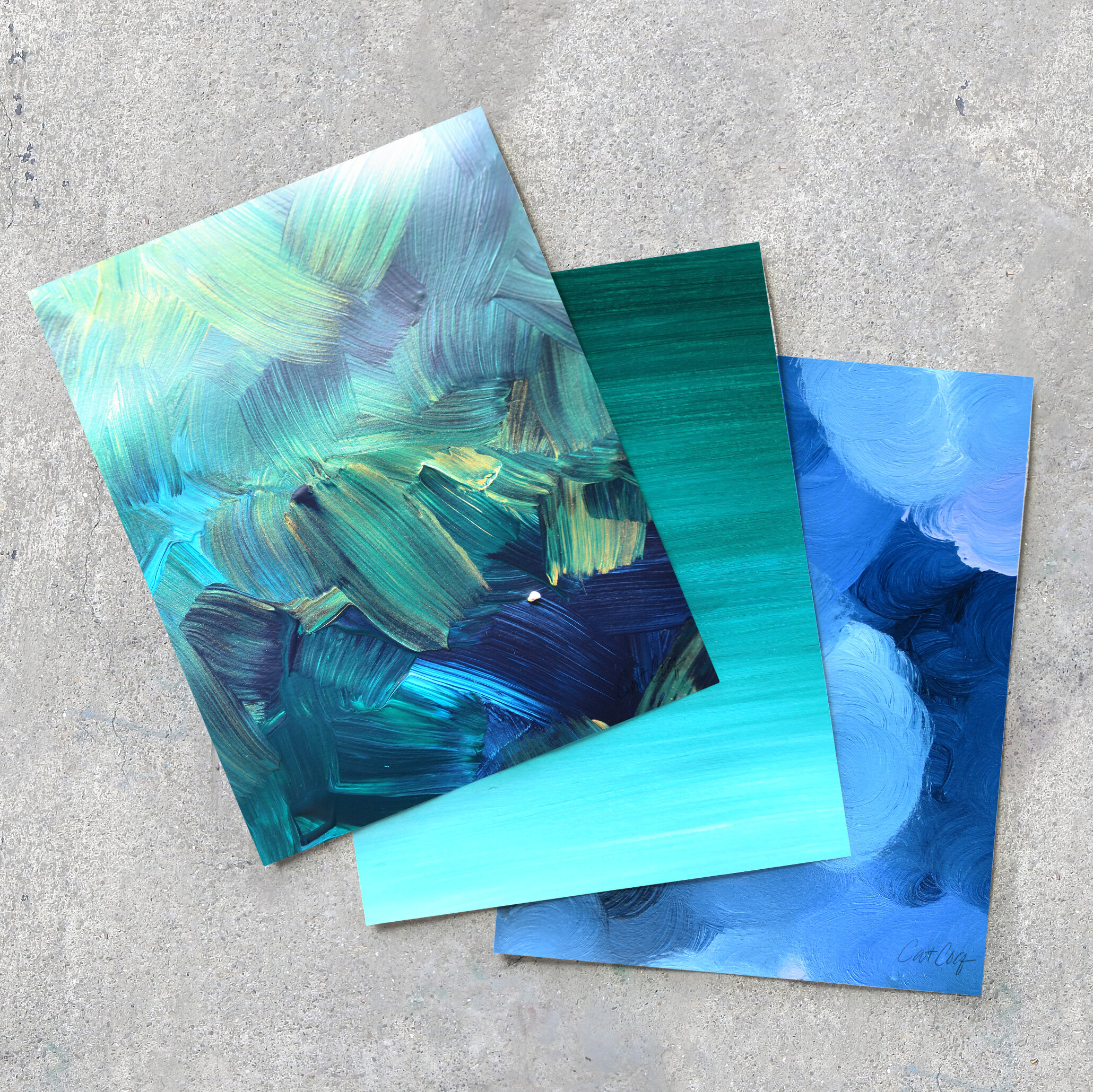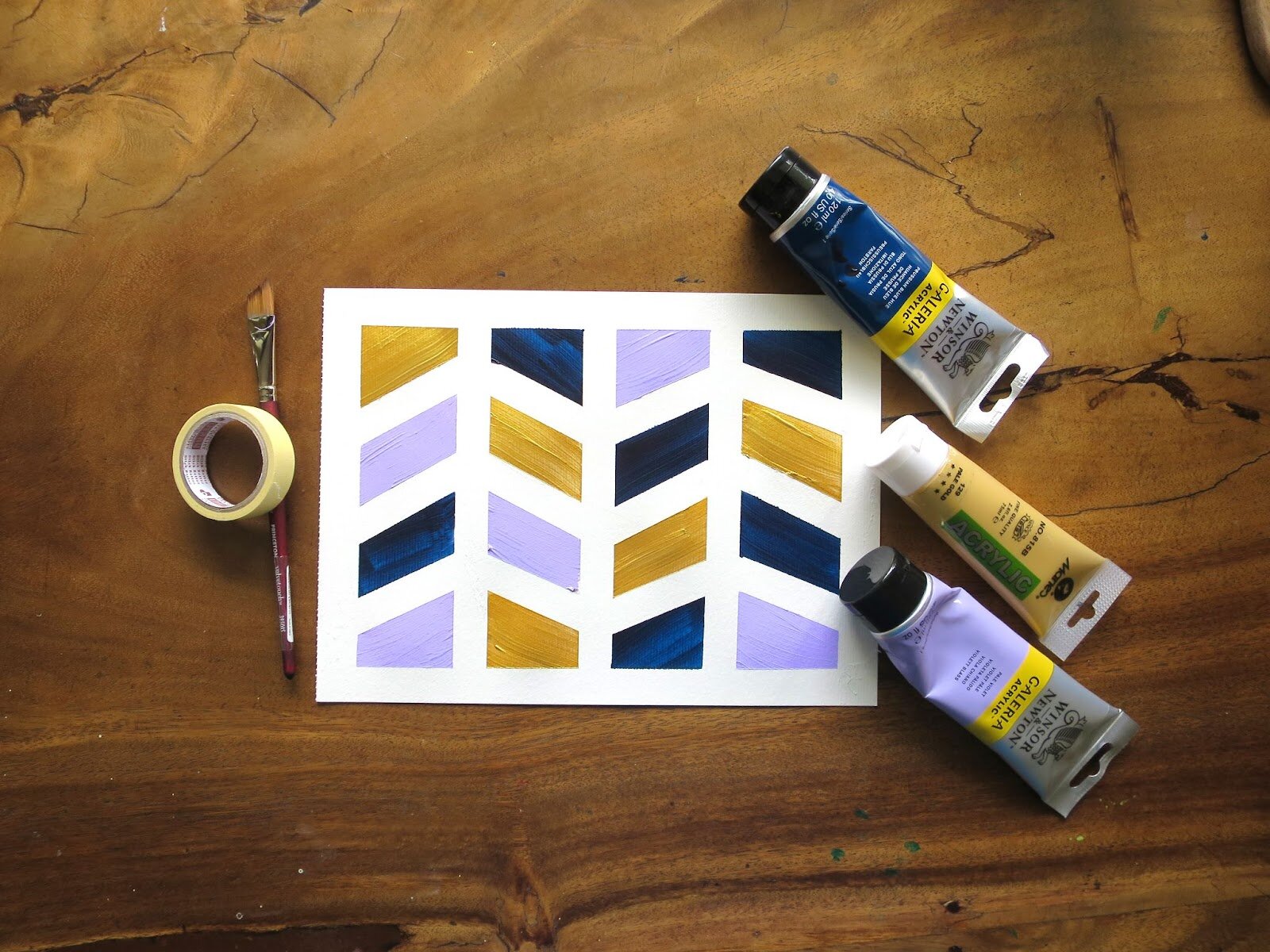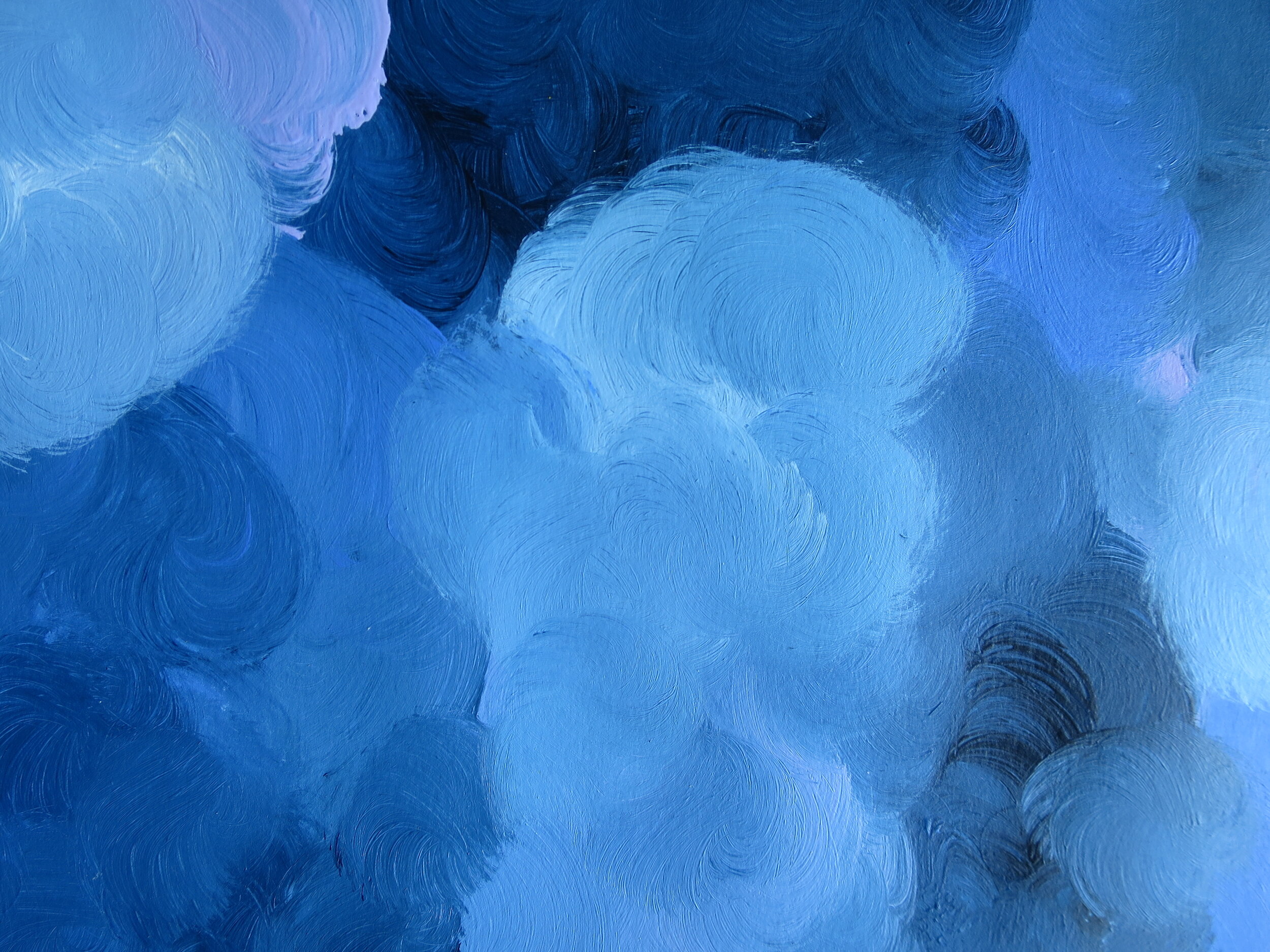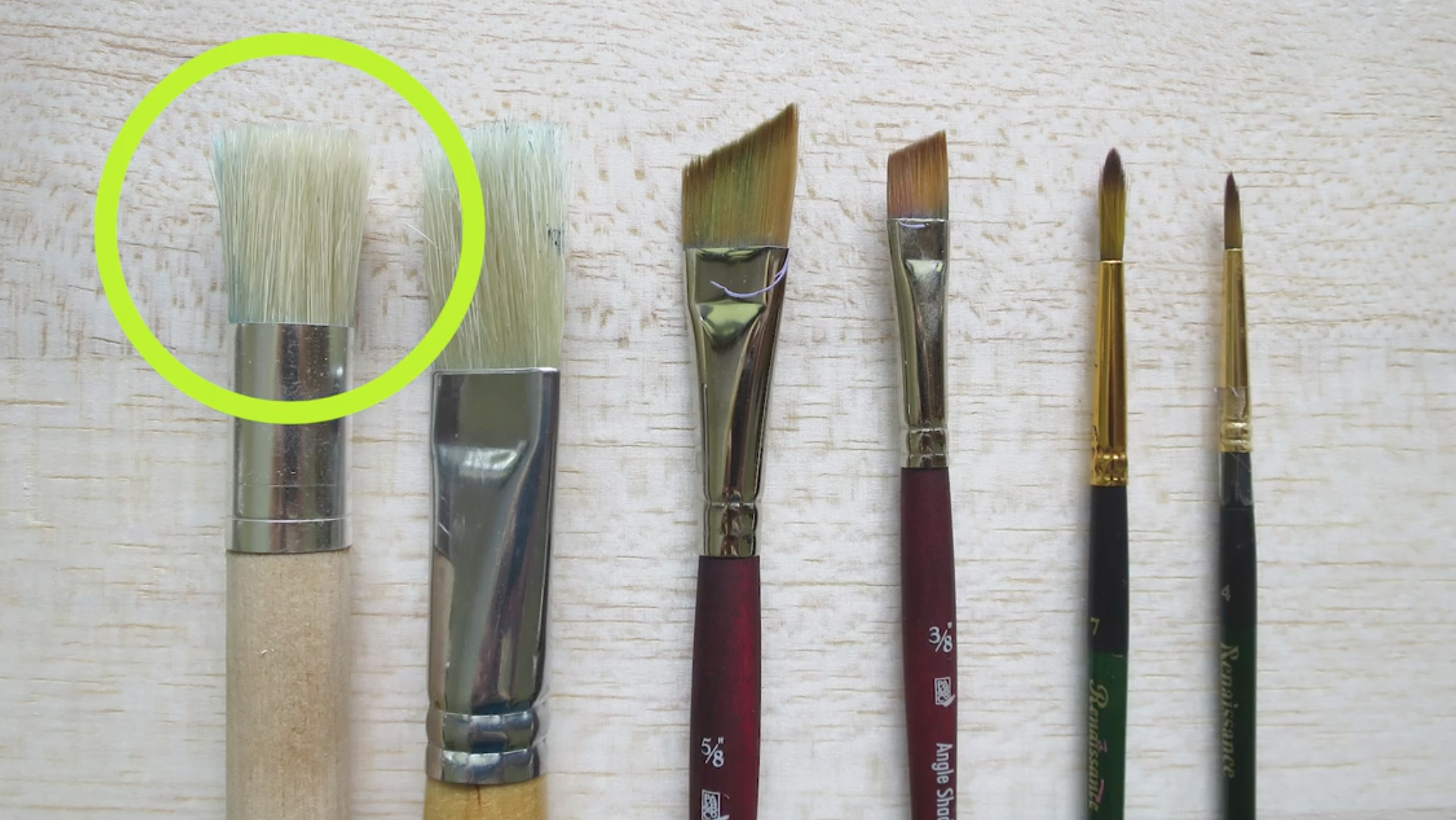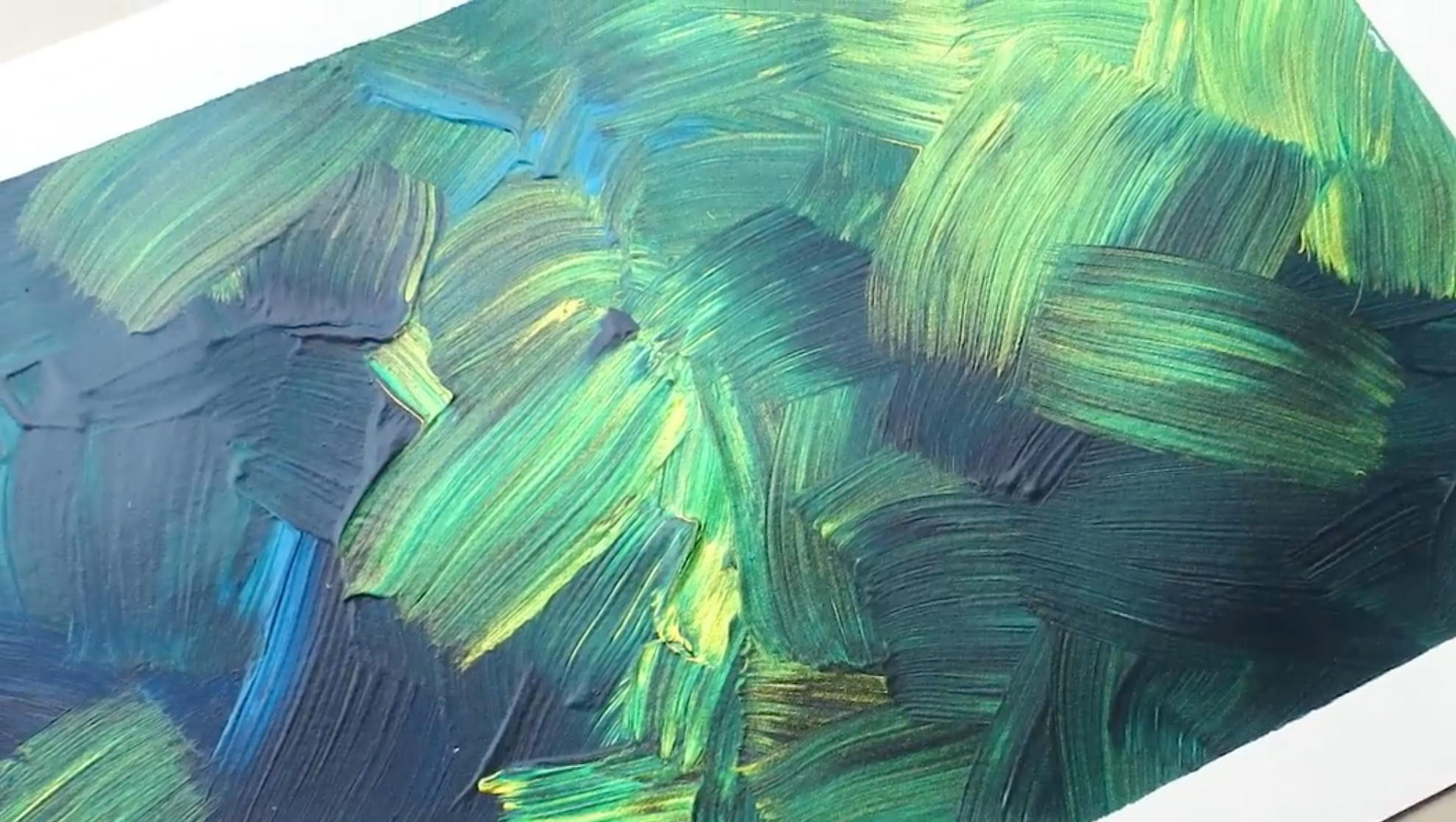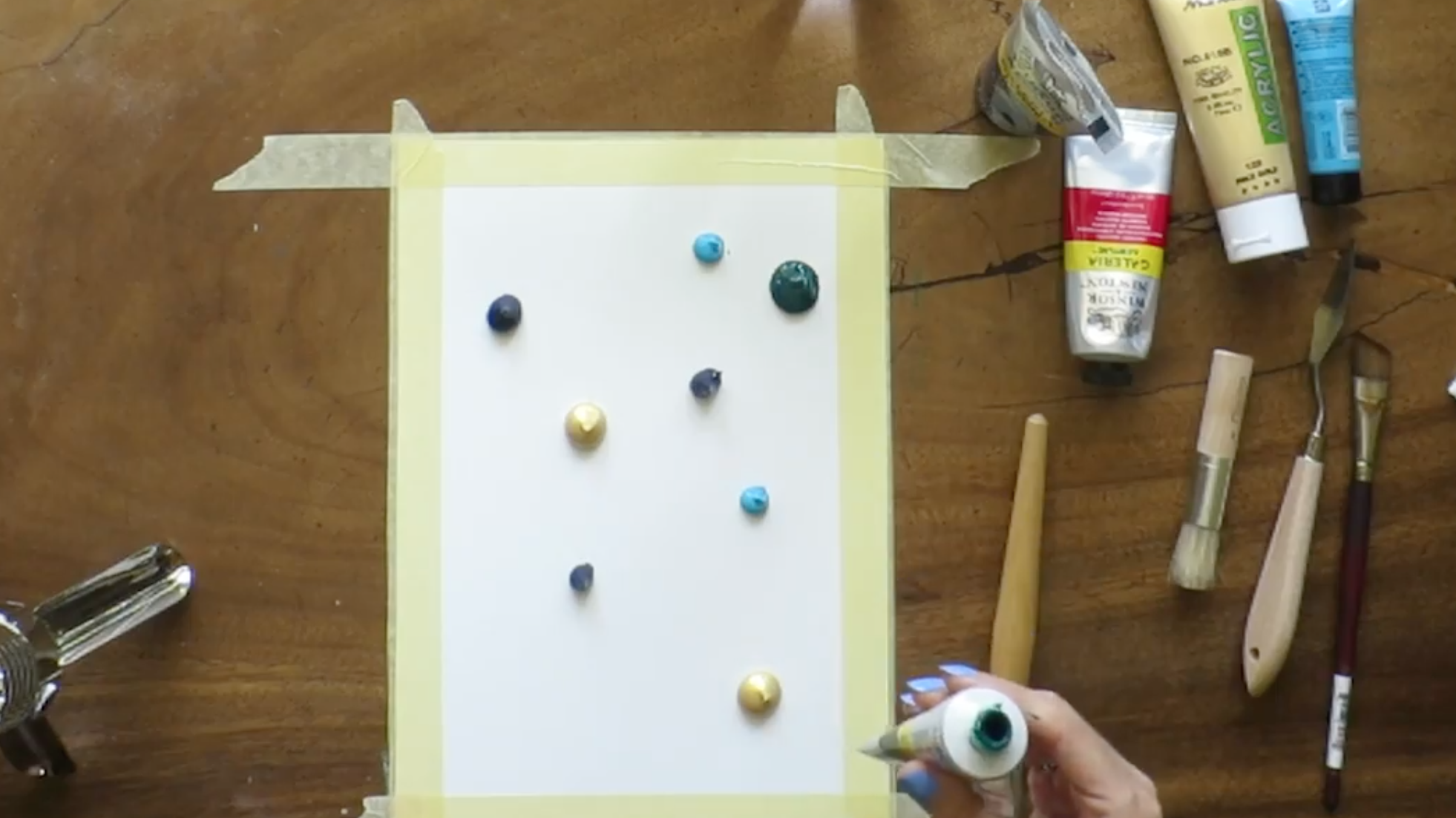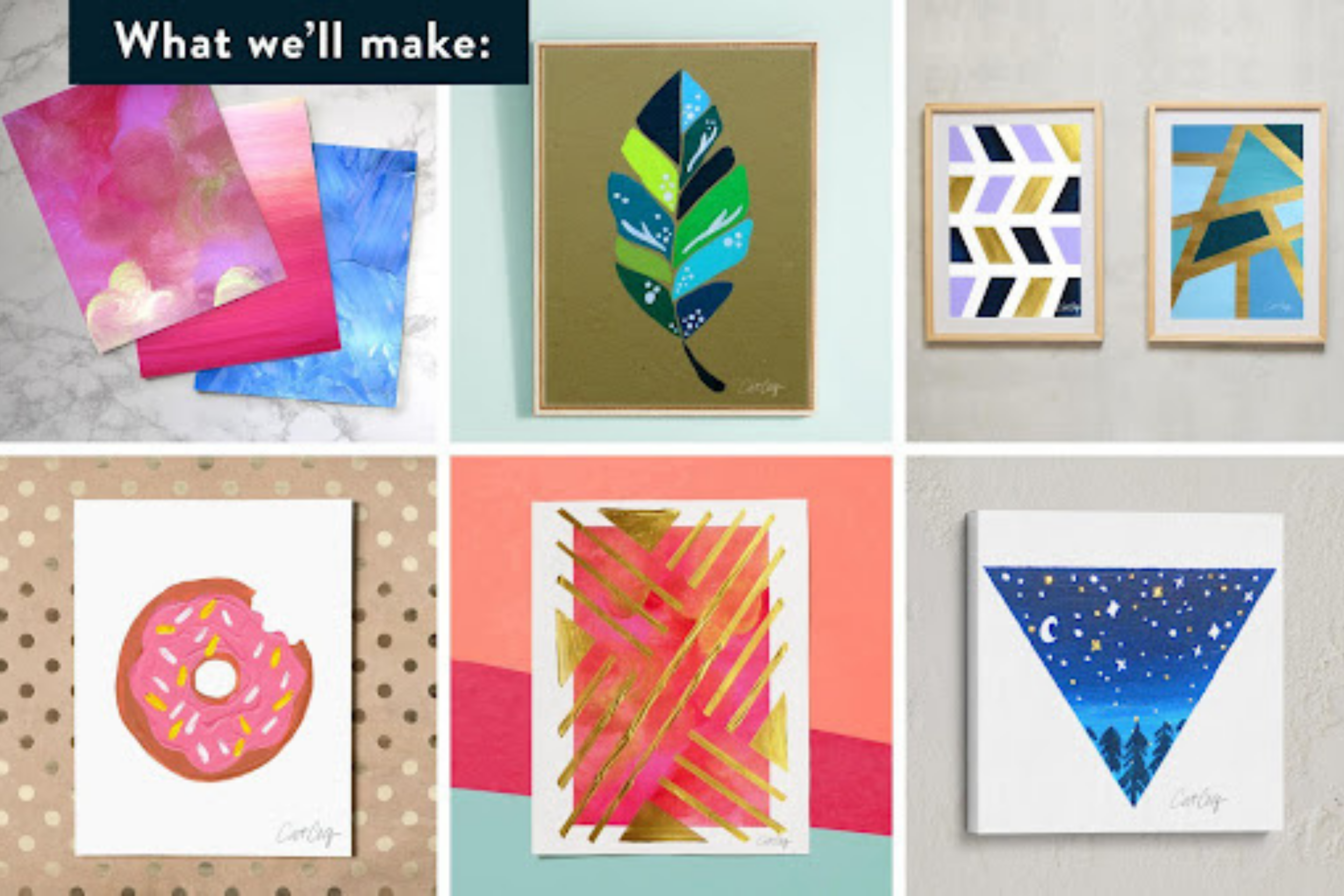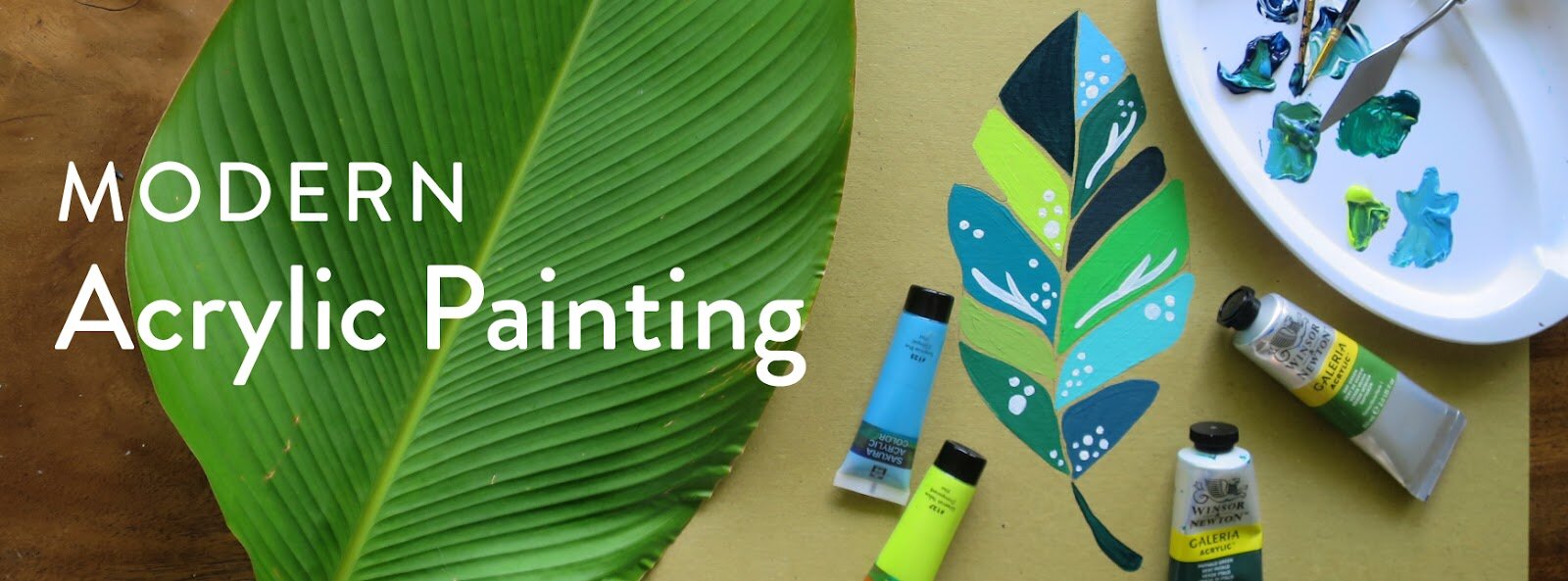How to Create Abstract Art with Acrylics
Ever wondered how to create abstract art? In this acrylic painting tutorial, I'm going to share some of my favorite abstract art techniques with you. Abstract art is booming in popularity, and it's one of the most accessible techniques for new artists!
Acrylics are an amazing paint medium for beginners. They are affordable and accessible. Even with the cheapest tubes of paint out there, you can achieve stunning results. Acrylic paint supplies are also really easy to maintain as well. All you need to have to clean your acrylic brushes is soap and water!
In this tutorial, I'll walk you through two different abstract art techniques with acrylic paint. One is a smooth blended abstract look, and the second is a thick textured technique.
Acrylic Paint Supply Recommendations
The basic supplies you'll need for abstract acrylic paintings are hard-bristled stencil brushes, paint, and a painting surface.
My favorite acrylic paint supplies:
Paint:
This set of acrylic paints gives you a wide range of colors to work with and is a great set to start out with.
I love buying high-quality paint in the primary colors (red, yellow, and blue) and white. This gives me the ability to mix them into any color I choose! I love these acrylics from Winsor and Newton.
Brushes:
Painting Surface:
When I’m painting with acrylics, I like using Strathmore Mixed Media paper. This pack is a 400 series, which means the paper is very thick. This is perfect for loading lots of acrylic onto the page without too much paper buckling.
If I want to give my acrylic paintings a little more oomph, I’ll paint on canvas. I like this 18-pack of canvas boards for two main reasons: 1) There are a variety of sizes, so you have more flexibility with how large/small you want to paint. 2) For 18 canvases, this is pretty dang cheap.
If these exact supplies aren't accessible to you, no problem! As I mentioned above, acrylic paints are really versatile, and you can't go wrong with any particular brand of supplies. If you're an acrylic painting beginner, feel free to use whatever supplies are easiest for you to find.
Ready to create your abstract pieces? Let's get started!
Technique #1: Smooth Blended Abstract Paintings
For this abstract painting technique, we're going to be squeezing different colors of paint directly onto the painting surface and blending all of them together. When you're done, the finished result should look something like this.
Note that each of these paintings uses colors that are within the same color family. When you're creating an abstract painting there is a lot of blending that goes on. If you mix complementary colors together (like red and green), your abstract composition will start to look a bit muddy. The reason for this is that when complementary colors are mixed together, they make black. However, if you mix two colors of a similar shade, your abstract piece will stay vibrant.
To steer clear of a muddy abstract painting we want to select colors that are similar in tone. In my example, I did one piece in cool tones and one in warm tones.
For more tips about color mixing and color theory check out this blog post on acrylic painting for beginners.
To start, grab a stencil brush with natural bristles like this one.
Mixing acrylic paint is an easy skill to learn, but will have a huge impact on your acrylic paintings. One of the Next, choose your colors. In my example, I'm going to go with light blue, prussian blue, and lavender. Then squeeze small, pea-sized dots intermittently on your painting surface. Make sure to vary the colors throughout the surface so you can create some interesting color blending.
Now it's time for the fun part! Using your dry hard-bristle stencil brush, start to grab paint out of the blobs and move your brush around in a circular motion. You want to make sure that the different colors blend together a bit, but not so much that the whole painting becomes one tone.
Don't overthink this, just let your creativity run wild. The best part about abstract art is that there is really no way you can mess it up. It's an extremely fun and intuitive way to paint! When you're done your abstract swirls might look something like this.
Or your piece might look completely different! That's the beauty of abstract art.
I love the look of these swirls and painterly brush strokes. Now let's move on to the second technique where we'll use even more texture.
Technique #2: Thick Textured Abstract Paintings
In this technique, we're going to create a painting with lots of texture. This is my favorite way to create abstract paintings because I love seeing the thick texture of the brush strokes coming through on the page.
To create this look, we will use a combination of short and long brush strokes with a flat hard-bristled brush. The goal is for this piece to look very rough and expressive. You want to make sure that you blend the colors just enough so that they are integrated, but not so much that they blend together into one color.
To start, choose your colors and squeeze out globs of each color onto your painting surface just like we did in the last technique. The only difference here is that you'll want to use larger amounts of paint. The reason for this is that it allows the strokes to stand out more when you use more paint.
Now you can just start to make your strokes. There is really not a wrong way to do this. In my example, I made short and long strokes going back and forth at different angles. Remember, the goal isn't to blend the paint together. We want this to look pretty rough and unmixed. Here is what my process looked like.
In the end, the whole painting only took me about 30 seconds, but it produced an incredible result! I loved seeing thick textured areas like this throughout the painting.
Since we used so much paint in this one, it will take longer to dry. Be sure to give it plenty of time to dry before handling the painting!
And there you have it! Two abstract art techniques! Though this is just the tip of the iceberg when it comes to abstract painting. Abstract art is all about exploration and experimentation. Use these techniques as a jumping-off point to get comfortable with abstract art, and from there, the sky's the limit! I can't wait to see what you come up with. You can share what you make on Instagram using the hashtag #CreateWithCatCoq, and tag me @catcoq so I'm sure to see it!
If you have any questions about abstract art or acrylics you can ask them in the comments below!
If you want to dive deep into the world of acrylic paint or if you want to learn how to paint specific motifs, I'd love for you to join me in my class, Modern Acrylic Painting. In this class, we explore ten separate acrylic styles (including a deeper dive into abstract art) and you'll finish the class with a stack of brand new paintings.
This class is for all levels. Whether you're an acrylic painting beginner or an experienced artist, you'll discover the joy of acrylic painting and learn how to infuse modern techniques into this easy-to-use medium.
You can enroll in the class for free when you sign up for a free trial with Skillshare. I hope to see you inside!



